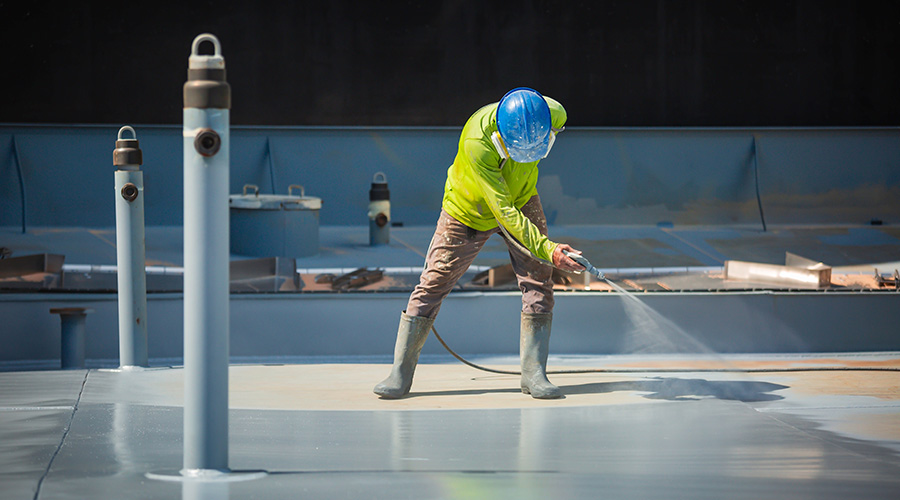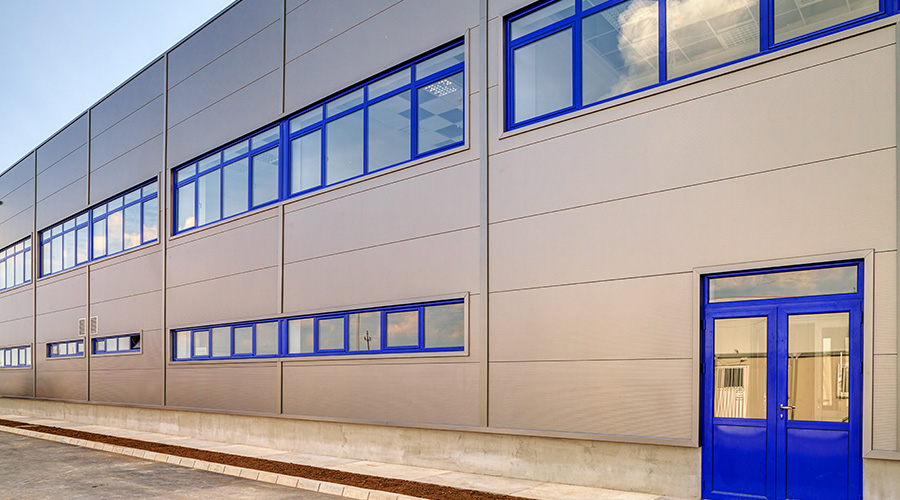Paint That Lasts Through Thick and Thin
Proper preparation and preventive maintenance can ensure paints have a long natural life.
Applying a fresh coat of paint is a surefire way to improve a facility’s appearance. But more importantly, paint protects a range of surfaces from wear and tear both inside and outside the building.
“Paint is the wear layer,” says Rick Watson, director of product information and technical services, Sherwin-Williams. “It is meant to protect the substrate and keep it from degrading — whether it’s wood, concrete or steel.”
As such, painted surfaces require regular inspections, upkeep and, eventually, repainting to ensure that the coating technology fulfills its intended purpose. Fortunately, indicators of a failing paint job are usually easy to identify: Paint that is peeling, cracking, blistering or fading is a sure sign that recoating is overdue. Similarly, if the substrate is visible through the paint film, it could be time to touch up, repaint and/or repair underlying damage.
“As a coating inspector, I have a lot of tools at my disposal, but the most reliant tools are my eyes,” says Mike Mundwiller, field development manager for Benjamin Moore & Co. “So I always perform a comprehensive visual inspection of the area to look for coating malfunctions.”
Sometimes the warning signs are not as obvious as peeling or blistering paint, says Erin Neff, director of marketing and business development at APV Engineered Coatings.
“A coating failure can be something as minor as a chalky residue on your hand,” she says. “Chalking is very common, and it’s a sign of the coating breaking down and eroding under UV exposure or other elements.”
Indeed, understanding the substrate as well as qualifying the exposure are crucial when choosing a coating system that will last for years to come.
“Unfortunately, you see applications where the coating system wasn’t meant for or couldn’t handle the type of exposure in that environment,” Mundwiller says.
Such was the case for one of Benjamin Moore’s customers: a retailer that struggled to keep the walls of its fitting rooms clean.
“The paint was chipping due to abrasion from hangers, and the retailer had to repaint every few weeks,” Mundwiller says. “It was a real dilemma.”
After assessing the premises, he discovered that the coating was not on par with the exposure of the environment. He recommended a scuff-resistant latex formula, which reduced the frequency of repainting from several weeks to once a year.
To avoid problems of this nature, Mundwiller advises facility maintenance managers to consider the forces that could potentially deteriorate the coating prior to repainting.
“A painted floor might be exposed to foot traffic or forklift traffic, for example, while the walls of a surgical suite might be exposed to disinfecting chemicals,” he says. “So you have to identify what the exposure is and match it with the best surface preparation and coating system.”
The importance of prep
Coating manufacturers say surface preparation is the most important step maintenance technicians can perform to promote the longevity of paint applications.
“Whether it’s a new paint job or recoating of an existing paint, the success of that project is made or broken in the preparation phase,” says Jake Boyer, business unit leader for Prosoco’s Clean & Protect Group. “Any coating is only as good as whatever it is you’re sticking it to.”
Approximately 80 percent of coating failures can be attributed directly to inadequate surface preparation, says Watson. To ensure surfaces are prepared correctly, they need to be clean, dry, dull and sound.
Clean: First and foremost, maintenance technicians should remove dirt, dust, oil, debris or other contaminants that could impede the adhesion of the coating system to the building material.
“The first step of any repainting is to clean the substrate — whether it’s new virgin material or it has existing paint on it,” Boyer says. “In most cases, this will require a pressure wash or light scrub.”
For exterior painting projects, Boyer recommends removing biological or organic material or staining, such as moss or mildew, that might inhibit the paint’s ability to bond to the surface.
For interior surfaces, a light scrub with soap and water is usually sufficient to remove dirt, grease and fingerprints, while a light sanding might be necessary for areas of flaking or peeling paint.
Dry: Once the surface is clean, make sure it is thoroughly dry before proceeding to the next step. Dry times vary depending on a number of factors, including the substrate, ambient temperature and airflow.
“Different paints may have a different level of moisture tolerance, so make sure you consult with the manufacturer, as well,” Boyer says. “There may be a specific relative humidity concern or a requirement to test the moisture content of the substrate with a moisture meter.”
The ideal temperature for painting is around 77 degrees Fahrenheit with 50 percent relative humidity, says Watson.
Dull: Depending on the substrate, high-gloss paint films might need to be dulled before repainting to improve adhesion.
Thorough washing with an abrasive cleanser might clean and dull the surface in one operation, or the surface might need to be dulled using a wire brush or sandpaper, says Watson. Once the surface is dull, the maintenance technician can use a bonding primer before applying the next coat of paint.
Sound: In addition to cleaning the surface, technicians should take care of any defects or damage to the underlying substrate prior to painting.
“If you’ve got rotted wood, don’t just paint over it,” Watson says.” Cut it out and replace it. If you’ve got steel that’s highly rusted, don’t prime the rust and then paint and hope for the best. Grind it or use a wire brush until you have a good, sound substrate.”
Related Topics:













